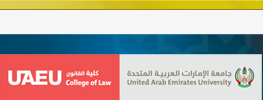Abstract
Abstract
In this research, the study seeks to clarify the concept and effects of the legal relationship between two banks: a distressed bank which is suffering from a financial crisis due to the excess of its total banking liabilities over its assets, and a temporary bridge bank that has been established and licensed by the state represented by the Central Bank of Iraq and Egypt and the Federal Deposit Insurance Corporation in America, to rescue the distresed bank by receiving and managing its good assets and liabilities, instead of subjecting it to the rules of restructuring, protective conciliation and bankruptcy. The bridge bank is one of the legal means invented by the economic thought and American law, and has been integrated into the banking system to be used in saving distressed banks from bankruptcy after the financial and economic crises that swept the world proved that subjecting the troubled bank to the provisions of liquidation is not a just solution as it leads to a loss of confidence in the banking system and discourages investors from investing their money with banks.
In order to achieve its objective, this study adopted the descriptive analytical approach in addressing the research topic and dealing with the legal issues of the relationship between the bridge bank and the distressed bank; it defines the parties involved, their characteristics, the legal characterization that can be conferred on them, the bridge bank’s commitment to receive and manage the assets and liabilities of the defaulting bank transferred to it, and the questions that this commitment raises, which this study focused on answering within the scope of American law, Iraqi law, and Egyptian law. This was based on two topics: the first one was concerned with studying the legal relationship between the distressed bank and the bridge bank in its conceptual framework, and the second one dealt with this relationship within the framework of the implications that it entails. The study concluded with several results and recommendations.
ملخص البحث
تسعى الدراسة في هذا البحث إلى بيان مفهوم ومفاعيل العلاقة القانونية التي تربط بين مصرفين: مصرف متعثر يعاني من أزمة مالية بسبب زيادة إجمالي مطلوباته المصرفية على موجوداته، ومصرف جسري مؤقت يتم تأسيسه وترخيصه من قبل الدولة ممثلة بالبنك المركزي في العراق ومصر والمؤسسة الفيدرالية للتأمين على الودائع في أمريكا؛ ليتولى إنقاذ المصرف المتعثر من خلال استلام وإدارة أصوله ومطلوباته الجيدة، بدلاً من إخضاعه لقواعد الهيكلة والصلح الواقي والإفلاس. فالمصرف الجسري هو أحد الوسائل القانونية التي ابتدعها الفكر الاقتصادي والقانوني الأمريكي، والتي دخلت النظام المصرفي؛ ليتم استخدامها في إنقاذ البنوك المتعثرة من الإفلاس بعد أن أثبتت الأزمات المالية والاقتصادية التي اجتاحت العالم أنّ إخضاع البنك المتعثر إلى أحكام التصفية يُجانب الصواب، وأنّه يؤدي إلى فقدان الثقة بالجهاز المصرفي، وابتعاد أصحاب رؤوس الأموال عن استثمار أموالهم لدى البنوك. ولأجل أن تحقق هذه الدراسة هدفها، فقد تمّ اعتماد المنهج الوصفي التحليلي في التصدي لموضوع البحث، ومعالجة المسائل القانونية للعلاقة التي تربط المصرف الجسري بالمصرف المتعثر: التعريف بطرفيها، وخصائص الطرف الآخر، والتكييف القانوني الذي يمكن أن يُضفى على هذه العلاقة والتزام المصرف الجسري باستلام وإدارة أصول ومطلوبات المصرف المتعثر المنقولة إليه، وما يفرزه هذا الالتزام من تساؤلات عُنيت هذه الدراسة بالإجابة عليها في نطاق القانون الأمريكي والقانون العراقي والقانون المصري. وكان ذلك من خلال مبحثين: عُني المبحث الأول بدراسة العلاقة القانونية بين المصرف المتعثر والمصرف الجسري في إطارها المفاهيمي، بينما عني المبحث الثاني بهذه العلاقة في إطار المفاعيل التي تترتب عليها. وقد خلصت الدراسة إلى عدد من النتائج والتوصيات.
Recommended Citation
(2025)
"علاقة المصرف الجسري بالمصرف المتعثر (دراسة مقارنة),"
UAEU Law Journal: Vol. 2025:
No.
0001, Article 8.
Available at:
https://scholarworks.uaeu.ac.ae/sharia_and_law/vol2025/iss0001/8

